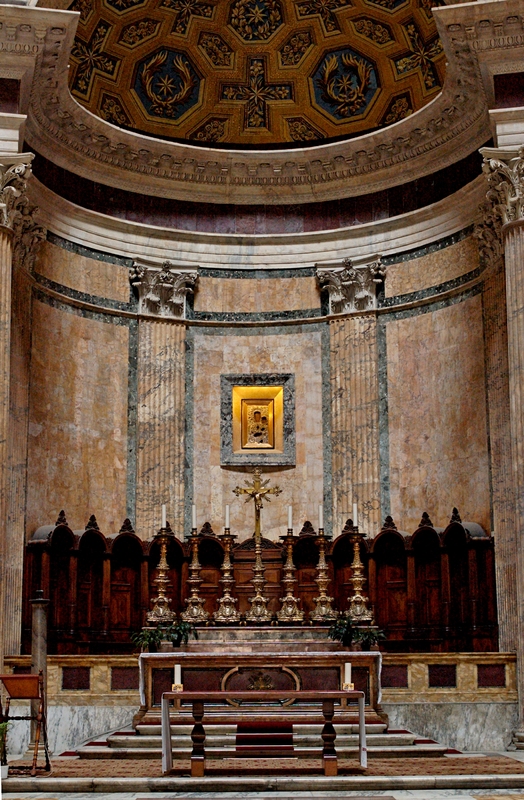Post-Antiquity to Middle Ages

Altar in the Pantheon; in the center, an illuminated image of Madonna and Child is preserved as a supposed icon. According to some sources, a priest clutched onto this image while hiding in the Pantheon from persecutors.
The Pantheon was used for various purposes during and after antiquity, but often as a public venue for the emperor to hold court or otherwise interact with the public.1 Although the Pantheon endured, Rome's fate changed. Emperor Constantine legitimized Christianity in 313 and moved the capital to Constantinople.2 Rome, as it was known with all its glory and significance, began to deteriorate. Citizens paid less attention to the city’s upkeep, and natural disasters such as floods and earthquakes caused much damage to the urban landscape. The ground level around key monuments rose significantly, giving the impression that they were slowly sinking into the earth.3
The next major event in the Pantheon’s history came about 5 centuries after its construction, when Pope Boniface IV requested the consecration of the Pantheon. On May 13 somewhere between 608-613, the emperor granted Pope Boniface’s request and thereby dedicated the Pantheon to St. Mary and all the martyrs — thus, the Pantheon became known as Santa Maria ad Martyrs (St. Mary and all the martyrs) and colloquially, Sanctae Mariae Rotundae.4 Over time, the pagan sculptures that may have been inside the building were removed and replaced with features to accommodate Christian worship.5 Despite its consecration, the Pantheon did not become a conventional church. The St. Maria ad Martyrs did not hold daily mass, but rather, most likely accommodated the pope’s occasional appearances.6
1 Claridge, Rome, 232.
2 Erik Thuno, "The Pantheon in the Middle Ages," in The Pantheon, ed. Marder and Jones, (New York, NY: Cambridge UP), 232.
3 Ibid., 233.
4 Ibid., 234.
5 Ibid., 236.
6 Ibid., 254.